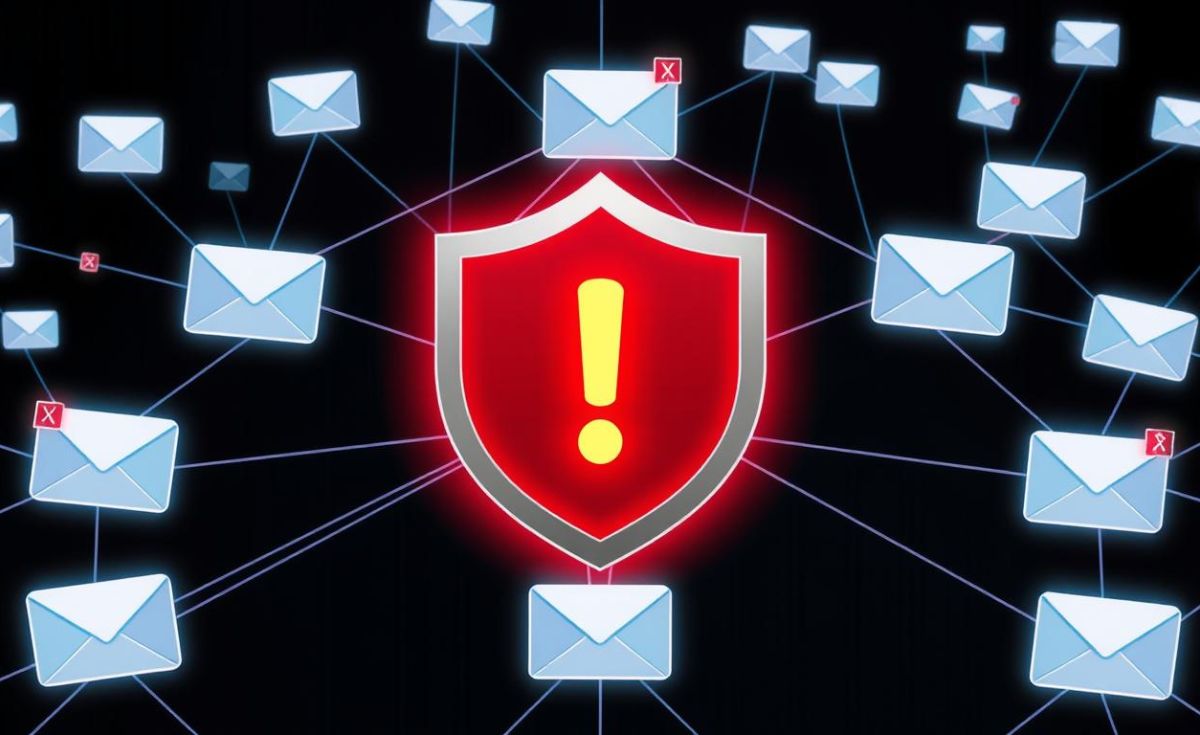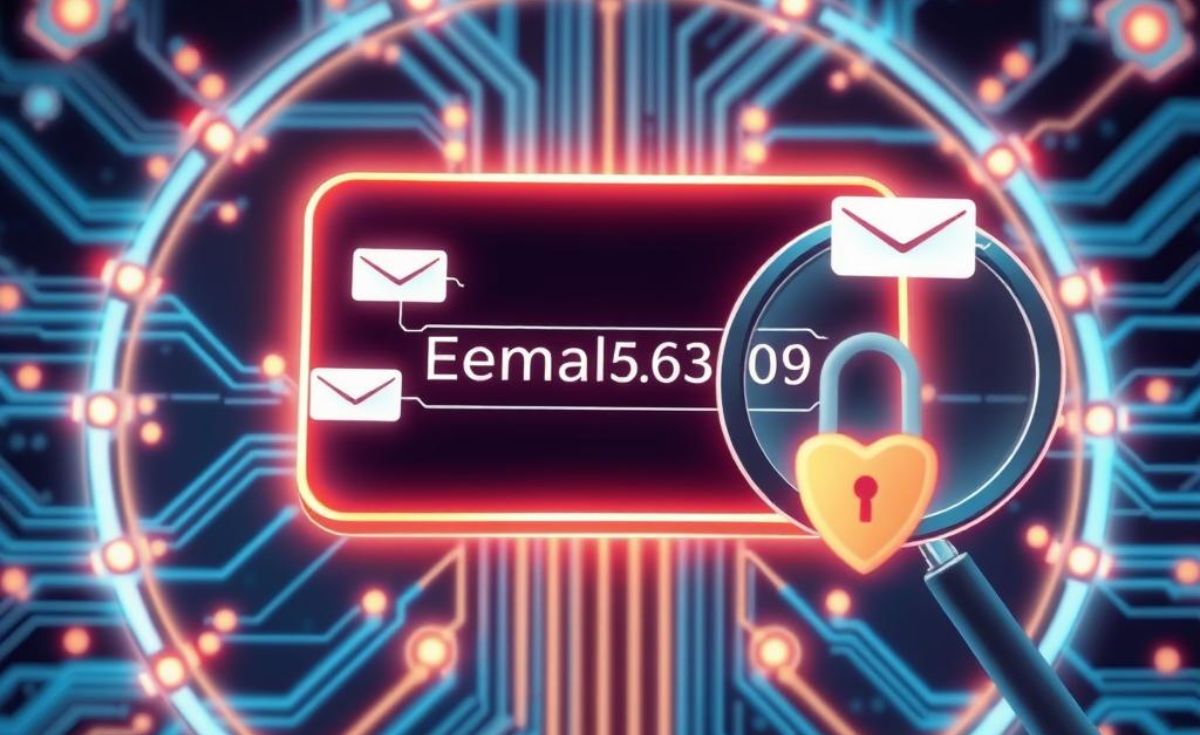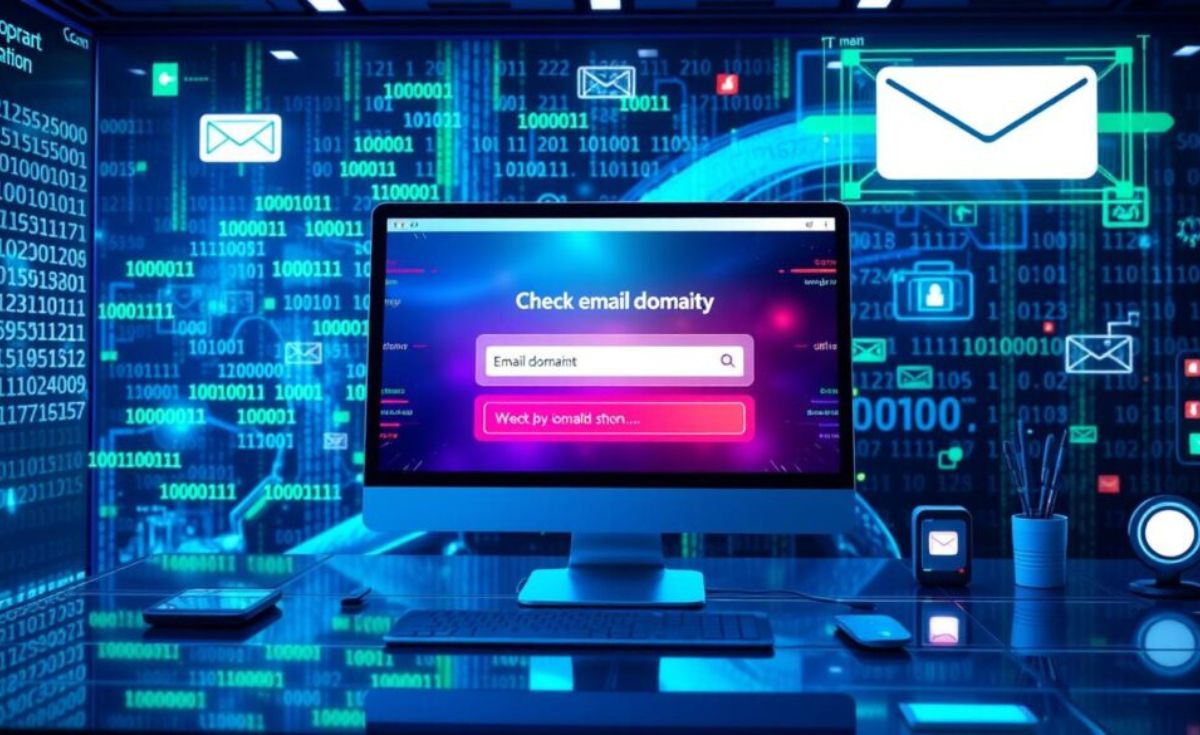In today’s world, 306.4 billion emails are sent and received every day. Yet, studies show that up to 30% of email addresses in databases have errors. It’s key to check Email Address Syntax to keep communication smooth, avoid delivery failures, and protect your database.
This article will show you how to check Email Address Syntax. We’ll cover the best ways and tools to make sure your emails are accurate and reliable.
- Introduction to Email Address Validation
- Understanding Email Address Structure
- Validate Email Address Syntax
- Best Practices for Email Address Validation
- Handling Invalid Email Addresses
- Real-World Examples and Use Cases
- Improving User Experience with Proper Validation
- Challenges and Limitations of Email Validation
- Conclusion
- FAQs
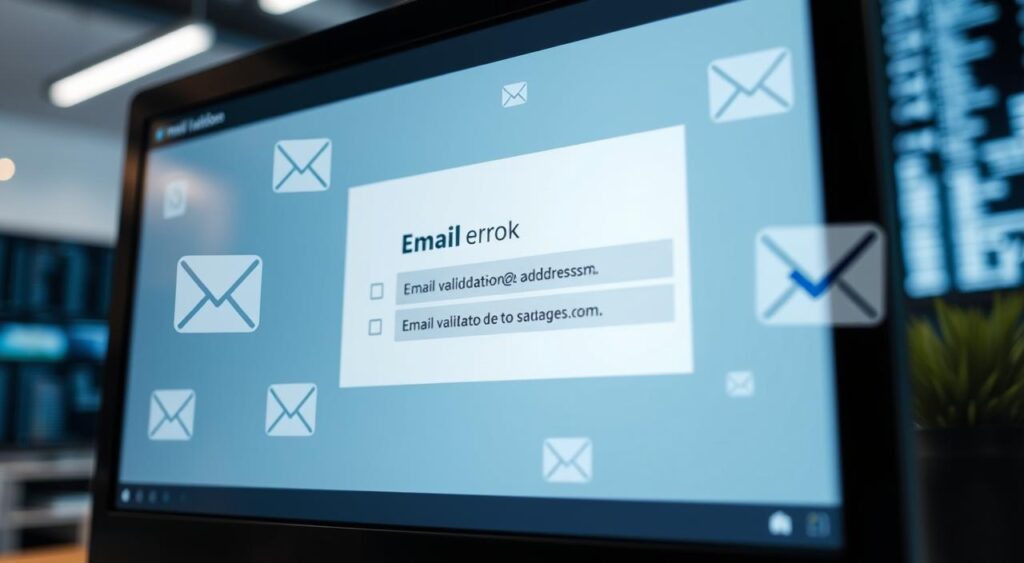
Key Takeaways
- Ensuring accurate Email Address Syntax is crucial for effective communication and data integrity.
- Understanding the structure and components of a valid Email Address Syntax is the foundation for effective validation.
- Regular expressions and third-party libraries can simplify the process of validating Email Address Syntax
- Implementing both client-side and server-side validation is the best practice for robust Email Address Syntax
- Handling invalid email addresses properly can enhance the user experience and maintain data quality.
Introduction to Email Address Validation
Email Address Syntax validation checks if an email is correct and complete. It makes sure the Email Address Syntax follows the right format. Having the right email is key for good communication and keeping your database healthy.
Importance of Accurate Email Addresses
Checking email addresses is very important. It stops emails from bouncing back, which can hurt your reputation. Accurate email addresses help your messages get to the right people. This builds strong relationships with your audience.
Common Issues with Invalid Email Syntax
Even though the email address format looks simple, there are many problems. These include:
- Misspelled domain names (e.g., “gmail.dom” instead of “gmail.com”)
- Incorrect use of special characters (e.g., “john@example,com” instead of “john@example.com”)
- Missing or extra characters in the local part (the part before the “@” symbol)
- Exceeding the maximum length of the email address
Fixing these common email syntax issues is key. It shows the importance of email syntax validation. This makes sure your messages are sent successfully.
Understanding Email Address Structure
Before we dive into checking email addresses, let’s learn what makes a valid one. A valid email has two main parts: the local part and the domain part. Knowing the rules for these parts is key to checking email addresses well.
The local part is what comes before the “@” symbol. It shows who or what the email is for. It can have letters, numbers, and some special characters. But, it must follow the rules of the email service to work.
The domain part is after the “@” symbol. It tells us who hosts the email. This can be a company name like “example.com” or a service like “gmail.com”. It must also follow certain standards to be valid.
| Email Address Component | Description | Example |
|---|---|---|
| Local Part | The part before the “@” symbol, representing the user or mailbox | john.doe |
| Domain Part | The part after the “@” symbol, representing the email service provider or organization | example.com |
Knowing about the email address structure helps us check emails better. It makes sure they are correct and can be sent.

Validate Email Address Syntax
Checking Email Address Syntax is key for good email sending. There are many ways to do this, from simple checks to complex ones. We’ll look at using regular expressions (regex) and third-party tools for this.
Regular Expressions for Email Validation
Regular expressions, or regex, are great for matching patterns in text. They help check if an email address is correct. You can make regex patterns to handle different email parts, like names and domains.
Writing good regex for email checks can be tricky. But, there are many online resources to help. Using regex can make your email validation better, catching more errors.
Third-Party Libraries and Services
There are also third-party tools for email validation. These can make checking emails easy. They often include extra features like checking if emails can be sent.
Some well-known tools include:
- Mailgun Email Validation API
- Twilio SendGrid Email Validation
- Clearout Email Verification API
- Kickbox Email Verification
- Verifalia Email Validation
Using these tools can save you time and make sure your email data is good. But, you should check their features, costs, and privacy before choosing.

Choosing a good method for email validation is important. It helps keep your data clean, makes users happy, and helps send emails well.
Best Practices for Email Address Validation
It’s very important to make sure email addresses are correct. This helps keep communication smooth and data safe. Using both client-side and server-side checks is key. These steps help make sure your email validation works well and keeps your data right.
Client-Side Email Validation
Client-side checks happen right when you type in your email. It’s good because it tells you right away if something’s wrong. It also helps the server not get too busy. Here are some tips for client-side checks:
- Use special patterns to check if the email looks right
- Give clear messages to help fix mistakes
- Check for errors as you type to help you fix them fast
- Help users by suggesting email addresses as they type
Server-Side Email Validation
Even with client-side checks, server-side checks are needed too. They make sure your data is safe and sound. Here’s how to do it right:
- Do a deeper check on the email’s parts, like the domain and mailbox
- Use outside services to see if the email can get messages
- Protect against bad guys trying to trick your system
- Keep a list of bad email addresses to block them
By mixing client-side and server-side checks, you get a strong email validation system. It makes things better for users and keeps your data correct.

Handling Invalid Email Addresses
We all face the problem of invalid email addresses sometimes. It’s a big challenge that needs a smart plan to keep users happy and data safe. We’ll talk about how to deal with these issues, like managing bounces and giving clear error messages.
Managing email bounces is a big part of solving this problem. When an email can’t be delivered, it bounces back. This tells us who to avoid sending emails to in the future.
- Set up a good system to handle bounced emails.
- Look at the bounce info to find out why emails failed.
- Have a plan to update user info when emails fail.
It’s also important to give users helpful error messages. When someone tries to use a bad email, we should tell them how to fix it.
“Capturing and addressing email bounces is essential for maintaining data quality and delivering a seamless user experience.”
Good error handling makes users happy and keeps our email lists clean. We can use checks on the client side or server side to catch bad emails early.
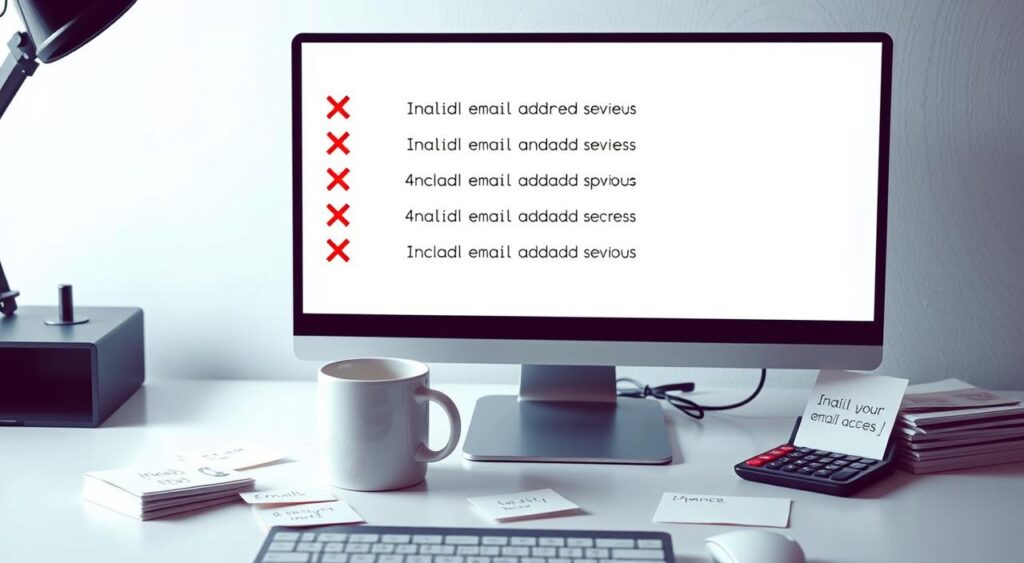
By tackling the problem of bad email addresses, we make our email systems better. This approach is key for any company that uses email a lot.
Real-World Examples and Use Cases
Understanding email address validation is key. It’s especially important in e-commerce and online registrations. Let’s explore why email validation use cases matter in these areas.
E-commerce and Online Registrations
In e-commerce, email validation in e-commerce is crucial. It helps keep customers happy by sending them important messages. This includes order confirmations and updates on their deliveries.
By checking email addresses, you avoid sending messages that can’t be delivered. This helps keep customers from leaving their shopping carts. It also helps you build stronger relationships with them.
In online registrations, email validation in online registration is also vital. It’s used when people sign up for accounts, newsletters, or events. Valid email addresses help keep user data correct and protect against security threats.
It makes communication smoother and keeps your data safe. This is important for any online platform.
| Use Case | Importance of Email Validation | Key Benefits |
|---|---|---|
| E-commerce | Ensures successful delivery of order confirmations, shipping updates, and other important communications. | Reduces cart abandonment, strengthens customer relationships, and improves overall customer satisfaction. |
| Online Registrations | Maintains accurate user data, facilitates reliable communication, and mitigates security risks associated with invalid email addresses. | Enhances user experience, streamlines communication, and enhances data integrity. |
Using email validation use cases in e-commerce and online registrations brings many benefits. It improves customer experiences and keeps data safe and accurate.
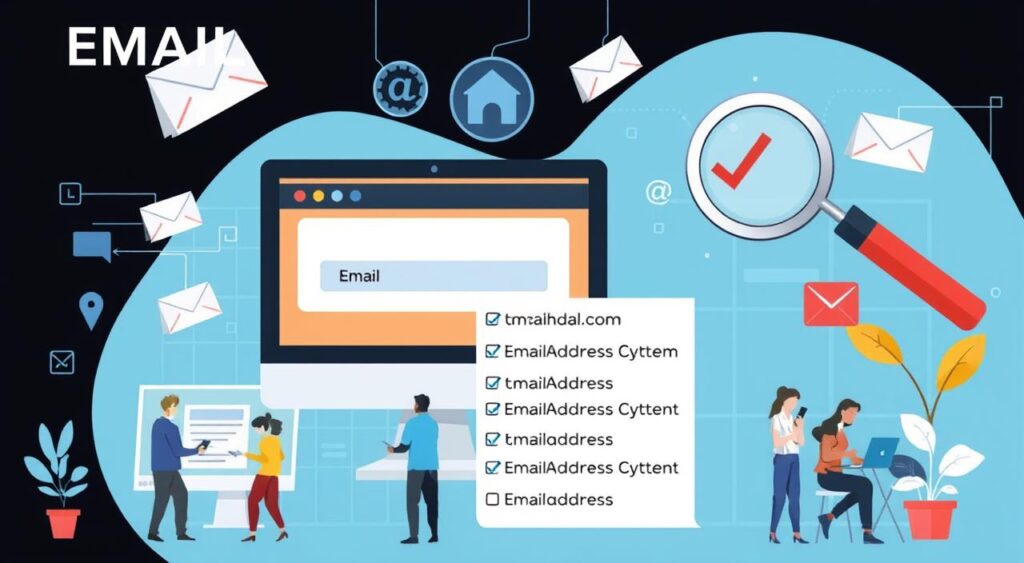
Improving User Experience with Proper Validation
Good email address validation does more than just check for accuracy. It makes the user experience better. By making validation easy for users, we reduce hassle and help them understand what to do. This builds trust and helps your business grow.
To make email validation better for users, follow these tips:
- Clear and Intuitive Error Messages: Give users clear help when they enter a wrong email. Don’t confuse them with vague messages.
- Seamless Validation Workflow: Make the validation process smooth. Don’t stop users suddenly or send them off track.
- Responsive Design: Make sure validation works well on all devices. This keeps the experience good everywhere.
- Email Suggestions and Auto-Complete: Help users by suggesting emails or auto-filling. This makes things easier for them.
By focusing on user experience in email validation, you gain trust and more customers. This leads to happier users and success for your business.
“Effective email validation not only ensures data accuracy but also plays a crucial role in enhancing the user experience.”
A good user experience with email validation can really set you apart. It helps you build a loyal customer base in a competitive world.
Challenges and Limitations of Email Validation
Email validation is key for keeping your digital talks safe. But, it comes with its own set of challenges and limits. Knowing these can help you make your email validation better. This way, it fits the real world of email today.
One big challenge of email validation is the changing rules of email addresses. Over time, email rules have changed a lot. Also, different email services have their own rules. This makes it hard to make one rule that works for everyone.
- Some email addresses might have special characters or formats. This can lead to wrong results when checking them.
- There are also temporary or fake email addresses. These are made to avoid usual checks.
- Another limitation of email address validation is not knowing if an email works without sending a message. This can be hard or not wanted in some cases.
Another limitation of email address validation is when people make mistakes or lie. They might type in the wrong email or give a fake one. This makes it hard to be sure about the email info you get.
| Challenges | Limitations |
|---|---|
| Complex and evolving email address syntax | Inability to confirm deliverability without sending a message |
| Unusual characters or formatting in email addresses | Potential for user error or intentional misrepresentation |
| Existence of disposable or temporary email addresses | Difficulty in creating a universal validation mechanism |
By understanding these email validation edge cases, you can make your email validation better. This way, your systems can deal with the complex world of email today.
Conclusion
Ensuring accurate and valid Email Address Syntax is key in today’s business world. We’ve looked at why email validation matters, common issues, and how to fix them. We’ve also talked about the best ways to validate emails.
Knowing how to structure email addresses helps a lot. Tools like regular expressions and third-party services make our emails more reliable. This leads to better customer relationships and stronger business results.
We’ve learned that both client-side and server-side validation are important. It’s also crucial to handle invalid emails well. Proper validation improves the user experience. By following these tips, your business can improve its email processes and succeed in the long run.
FAQs
What is the importance of validating email address syntax?
Validating email address syntax is key for good communication. It helps avoid delivery failures and keeps your database safe. Accurate email addresses are crucial for sending messages and keeping your email interactions reliable.
What are some common issues with invalid email syntax?
Invalid email syntax can cause many problems. Issues include wrong formatting, missing or wrong domain names, and unsupported characters. These problems can lead to failed deliveries, data issues, and bad user experiences.
How do I understand the structure of a valid email address?
A valid email address has two parts: the local part and the domain part. Knowing the rules for each part is important for checking email addresses.
What are the different methods for validating email address syntax?
There are many ways to check email address syntax. You can use regular expressions or third-party services for better validation.
What are the best practices for email address validation?
Good email validation uses both client-side and server-side checks. It's important to give clear error messages and handle invalid addresses well. This makes the user experience better.
How can I handle invalid email addresses in my applications?
When you find invalid email addresses, you need a plan. This includes managing bounces, giving helpful error messages, and using good error handling. This keeps your data and users happy.
What are some real-world examples of email address validation use cases?
Email validation is very important in e-commerce and online sign-ups. It helps improve customer experiences, cuts down on errors, and boosts your business.
How can proper email address validation improve user experience?
Good email validation ensures accurate data and improves user experience. It builds trust, increases conversions, and helps keep customers coming back.
What are the challenges and limitations of email address validation?
Email validation is vital but comes with its own set of challenges. These include dealing with edge cases, complexities, and practical limits in validating email addresses.

